Intelligent chatbots of today are backed by active learning capabilities that help them improve with every interaction, this still doesn’t imply that you set and forget about them.
Chatbots may require some fine-tuning to efficiently reach pre-defined goals. To measure and improve the effectiveness of your chatbot, you need to track certain metrics in chatbot analytics and that is what we’re going to discuss in this blog today.
What is chatbot analytics and why is it important?
Chatbot analytics is a process to analyze how well your chatbot is performing to meet your organizational goals. While chatbot analytics helps improve chatbot effectiveness, it also helps you get a bird’s eye view into actionable data that you can use to iterate and improve total user experience.
“Leading organizations in every industry are wielding data and analytics as competitive weapons.” Gartner predicts that by 2022, 90% of corporate strategies will explicitly mention information as a critical enterprise asset and analytics as an essential competency.
Here are some more reasons why chatbot analytics is essential for business success:
1. Measure chatbot effectiveness
With the right metrics in place, you can measure how well your chatbot is performing and identify the areas of improvement.
2. Track your goals
Keep an eye on chatbot-user interactions and see where your users are dropping off.
3. Get geographical insights
Improve your sales and service operations by understanding where your audience is when they are engaging with your bot.
4. Optimize conversation funnels
Know your users and where they get stuck to remove any hindrances.
5. Analyze data at scale
Collect and analyze data, in compliance with GDPR and CCPA regulations, from thousands of users with little to no extra human effort.
What is a chatbot analytics metric?
Metrics are measures of quantitative assessment commonly used for assessing, comparing, and tracking performance. Generally, a group of metrics will typically be used to build a dashboard that management or analysts review on a regular basis to maintain performance assessments, opinions, and business strategies.
There are three types of metrics for measuring chatbot performance – user metrics, conversation metrics and commercial metrics. Each type is aligned towards a specific goal and essential in leading and managing strategic projects of all kinds.
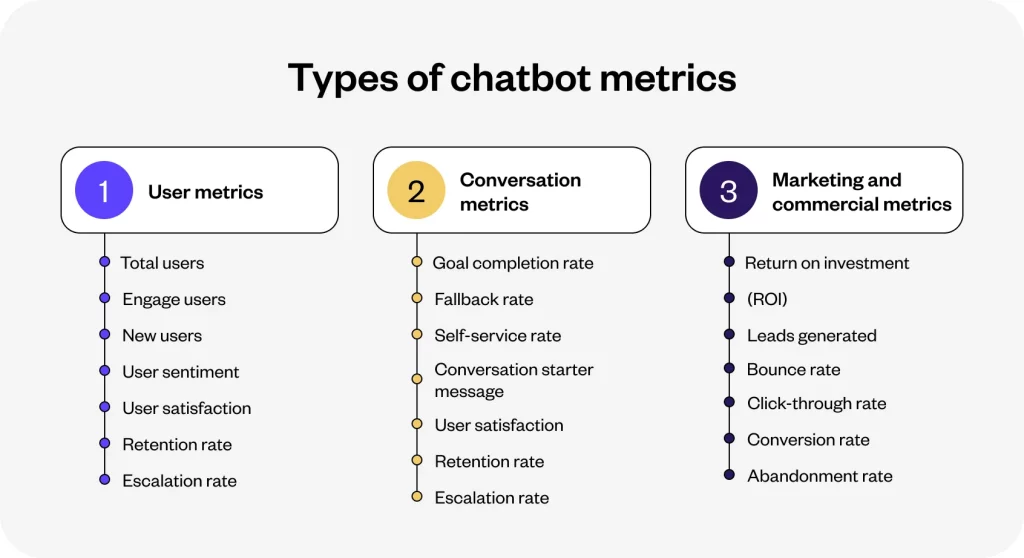
Chatbot analytics – User metrics
1. Total users
This metric captures the number of unique users who have interacted with your chatbot in a specific time frame. It matters because it shows how the number of users has changed over time and the volume of user data your chatbot has been exposed to. You can use this metric to compare with the total users of different platforms, to see which channel is the most preferred by your users.
2. Engaged users
These are the users who actively interact with your chatbot and are actually interested to know more about your services. This metric helps you determine if your chatbot is able to hold conversations and keep users engaged.
4. New users
Growth in new users is a strong indication that your chatbot is effectively attracting and engaging users. The number of new users metrics helps you determine trends in the growth of your business in real-time.
5. User sentiment
You can only capture this metric if your chatbot is powered with a natural language processing (NLP) engine. User sentiment can be understood by conducting an intent analysis to categorize responses as positive, neutral, or negative. The insights you gain from this analysis can help you understand where/when the conversation went wrong.
6. User satisfaction
This metric helps you evaluate how helpful your chatbot was to the user and whether the user is happy with the conversation. You can measure this by sending a short survey to the users at the end of a conversation. User satisfaction surveys allow you to determine if your chatbot is meeting user expectations and also helps users express their issues or concerns with your service.
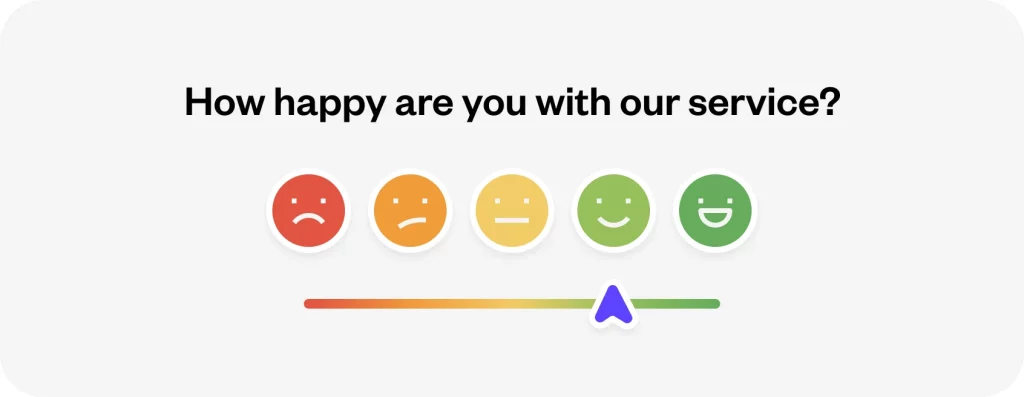
7. Retention rate
Retention rate metric for chatbots helps measure the percentage of users that return to interact with a chatbot in a given time period. Returning users mean that your chatbot made a lasting impression. Also, the more users engage with your chatbot, the more intel you’ll be able to generate.
8. Escalation rate
There can be situations when your chatbot has to deflect the conversation to a human agent. This could be because the chatbot does not understand a user’s input, has not been trained on a specific topic or a user specifically requests to talk to a human agent. For new chatbots, the escalation rate can improve over time.
However, if you’re experiencing high escalation even after several months, it might be worth it to conduct additional training or switch to an AI-powered chatbot that uses NLP and machine learning to learn from past interactions and requires minimal training.
Chatbot analytics – Conversation metrics
1. Goal completion rate
Chatbots can be used for a variety of goals like user engagement and lead generation. GDR can help you capture the percentage of successful goal completions achieved by your chatbots. GDR can also be useful to mine data to identify common trends in user preferences. It is important to note that the capabilities of your chatbot are directly related to the technologies that power it.
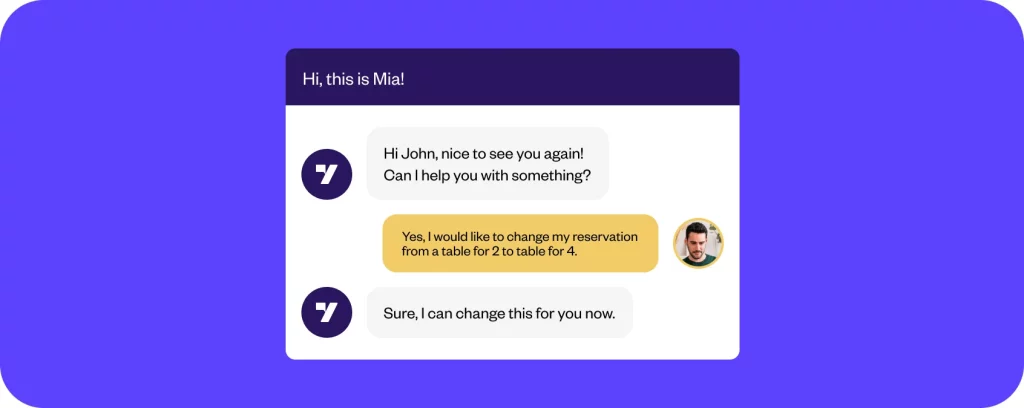
2. Fallback rate
Chatbots are not perfect, they improve with every interaction but sometimes they can fail to answer a user’s question accurately. This is what you measure with the help of fall back rate. Fallback rate can be high when the bot doesn’t understand the user’s language or is rule-based and cannot understand iterations in a query. When experiencing a high fallback rate, it might be right to train your chatbot to understand various languages and scenarios.
3. Self-service rate
The main goal of chatbots in customer service is to reduce the burden on human agents and handle most queries single-handedly. Self-service rate measures the frequency of completed conversations without a need for second-tier customer support.
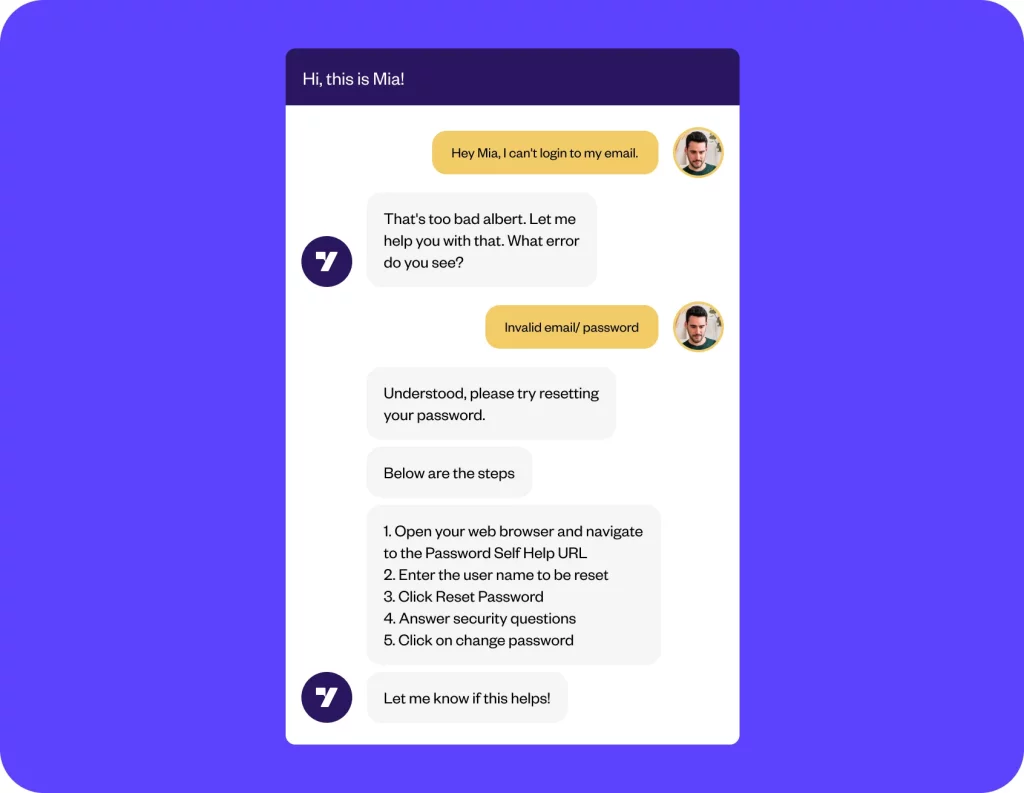
4. Conversation starter messages
It is important for chatbots to break the ice and start conversations with customers. An impactful opening message decides the fate of further customer engagement – whether the customer will reply, will they drop off or stay engaged? It is important to measure how often the chatbot is successfully able to start and carry conversations.
5. Chat volume
Chat volume refers to the number of successful customer-initiated interactions. This metric helps you find out if your chatbot is able to help your customer efficiently. If the conversation is long, it also indicates that your customers are finding it easy to converse with your bots and that will help you deliver more value to your customer via your chatbot.
6. Conversation duration
Conversation length is an indicator of the kind of experience your chatbot is creating for your users. Long conversations can mean that your chatbot is keeping your users engaged but it can also mean that it is taking long for your chatbot to complete a goal. While tracking the latter can be difficult, it makes sense to combine it with goal completion rate and check which conversations lead to goal completions in less time and which take long.
Chatbot analytics – Marketing and commercial metrics
1. Return on investment (ROI)
Return on investment is critical for every project and chatbots are no exception. Mathematically, ROI = (Current Value of Investment – Cost of Investment) / Cost of Investment. Theoretically, you need to track whether the spending on your chatbot is yielding good results or not. Metrics like lead generation, goal completion, cost per fall back can help you measure the ROI.
2. Leads generated
Lead generating is the most important use case of sales chatbots. Chatbots should be able to identify and capture high-quality leads. With this metric you’ll be able to compare and decide what lead generation tool works best for your business.
3. Bounce rate
Bounce rate for chatbots refers to the number of users who visited your platform and left without communicating with your chatbot and also didn’t complete a specific goal. It can be because the chatbot didn’t greet your customer or they found the chatbot to be intrusive. Either way you need to look at this metric as it has a direct impact on user engagement.
4. Click-through rate
Chatbots are increasingly becoming important tools for promotions and marketing. Just like emails, you can share new products and feature alerts with your customers through chatbots. You can check how many people click on the promotion and actually proceed to take action.

5. Conversion rate
Intelligent chatbots are perfectly capable of assisting customers throughout their journey – from awareness to accepting payments. With this metric you can measure how many customers completed their purchase from the chat interface.
6. Abandonment rate
Chatbots can direct the customers to the check-out page or accept payments and close the sale from the chat interface itself. However, due to several reasons customers may not go forward with completing the purchase and this is what this metric can help you measure.
To conclude
Chatbot analytics helps you measure your chatbot’s performance based on various metrics related to user experience, conversation, sales and marketing. These metrics help you determine whether the performance of your chatbot is aligned with your business goals and customer expectations. The insights that you get from chatbot analytics can help you make informed and data-driven decisions.
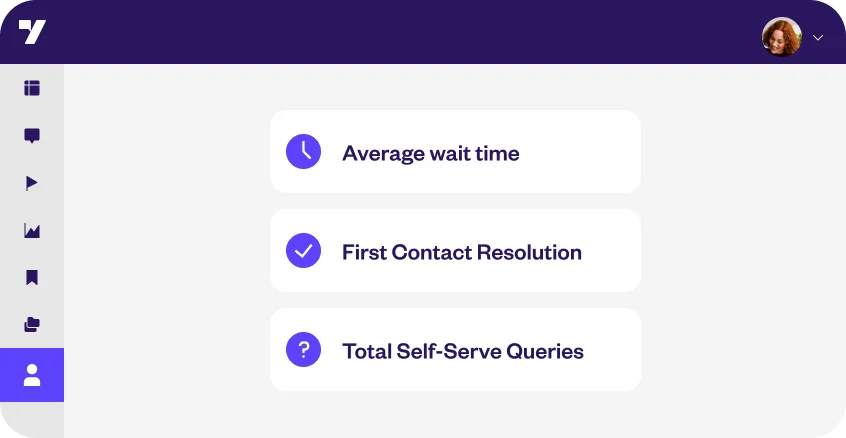
Well, now you know what all chatbot metrics to track but how do you go about measuring them? As data sets are becoming bigger and more diverse, enterprises might face challenges associated with incorporating them into an analytical platform.
Without the right platform, gaps in data interpretation can lead to missed messages and insights, affecting business outcomes. This is why you need a trusted analytics platform to access all your data comprehensively, look at user sentiments, engagement trends and more in real-time. Request a demo.






















